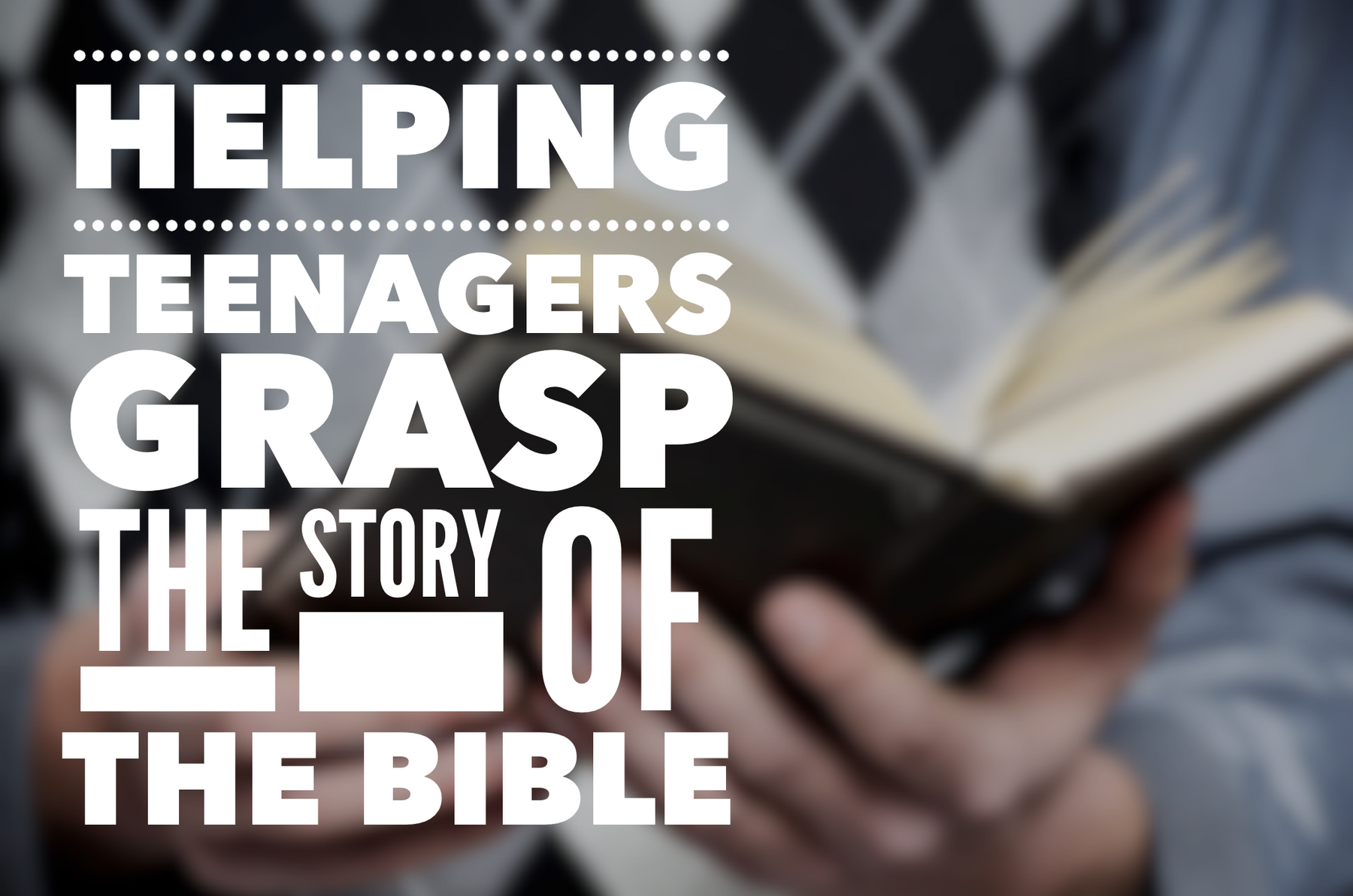
Helping Teenagers Grasp The Story Of The Bible
Do you tell a good story? Or know someone who does? Think of how you tell a good story. If you want to make the story have maximum impact, you set the stage. You take the time to provide the context for what you're about to tell. If you don't, you tell a story that's not nearly as meaningful because the listener doesn't know exactly how to place the story in a specific context. The same goes with a good joke. If you rush to the punch line without building up the context, it falls flat.
The surrounding context of your joke is what gives the punchline its punch. The same is especially true of your Bible teaching.
Teaching any passage without providing the context is not only a poor way to teach, it actually does your teenagers harm. It fails to help them see the "big picture view" of Scripture. The fear is that instead of helping teenagers understand the Bible as the story of God's redemption of humankind, teenagers will see it instead as a mob of unrelated stories and moralistic teachings.
So, how can you teach in context? Glad you asked. Here's three easy tips:
Think Macro
Take a few seconds to place the book you are studying in the overall timeline of Scripture. It looks something like this: "OK, today we will be looking at a passage from Philippians. If we're thinking about where Philippians falls in the Bible, it's a New Testament book. It was written after Jesus died. The Church had started to spread after Jesus' death and resurrection. Philippians is written to a specific group of these new Christians." It doesn't have to be complicated. Just give students something to nail down the big picture view of the book and where it falls.
Who? When? Why?
Who wrote the book? When was it written? Why was it written (i.e., what's the purpose)? This stuff isn't boring. It's vital. And your students need to hear it. Do you need to treat them to a discourse on the alternate theories of the authorship of Genesis? No way. But students need to know that Scripture was written by God-inspired people, in a certain cultural context, with a specific purpose in mind.
Think Micro
Don't just jump into a passage. Help students know where the passage fits into the surrounding text. If you're teaching your students Jesus' words from Matthew 7 about not judging others, place the passage in the context of the Sermon on the Mount. Take a quick second to summarize what's going on.
Does teaching contextually take more preparation? Honestly, it does. But nothing a good Study Bible can't solve. Does it add three to five more minutes to your teaching time? You bet. But if your goal is transformation in the lives of your students, it's worth it.
Transformation doesn't happen without the Spirit speaking through the Word. And helping students understand the narrative of the Bible provides them with a much clearer understanding of God's Word. Clearer understanding leads to better application. And better application is at the heart of life change.
What other tips do you use to help your teenagers grasp the story of the Bible?




Leave a comment